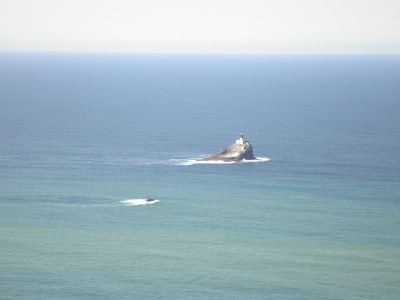
Indian Beach and Ecola Point. Indian Beach was where William Clark discovered the remains of a large beached whale, the blubber of which helped sustain the Corps of Discovery during their winter encampment at Fort Clatsop in 1805-1806. Clark named the creek "Ekkoli," for the Chinook word for "whale."

The Pacific Ocean, 1400' below Tillamook Head.

The Tillamook Rock Lighthouse, about a mile offshore.

Dawn hikes down the south side of Tillamook Head to Indian Beach. In Clark's time, the native Tillamook Indians repeatedly burned the south side of Tillamook Head to create meadows where salal and other nourishing plants could grow. Since that time, the forest has encroached again, shrinking the meadows.

Tidal pools near Indian Beach. These were another source of food for the Tillamooks, who would gather mussels from the tidal pools and dig clams from the beaches.




0 comments:
Post a Comment